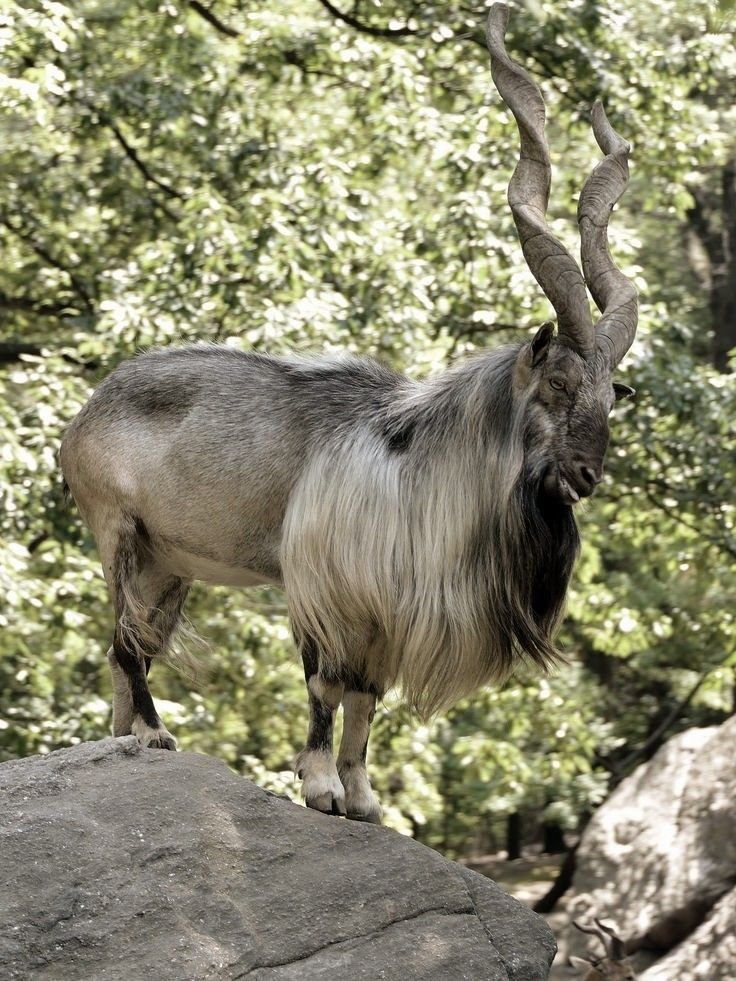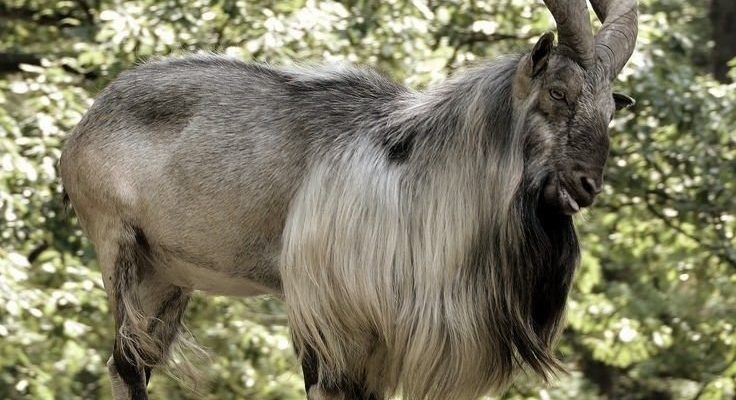
These creatures are found primarily in the rugged mountains of Central and South Asia. Their name, “Markhor,” comes from a Persian word meaning “snake-eater,” which hints at their resilience and strength. Just like a good story, the life of a Markhor is filled with twists and turns, and I can’t wait to share some of the most fascinating facts about them. So, let’s dive in!
1. Unique Appearance
Markhors are hard to miss due to their stunning looks. With their long, curved horns that can grow up to 5 feet in length, they are one of the most recognizable goats in the world. The texture and patterns of their fur can vary based on their environment, helping them blend into rocky terrains. Imagine them wearing nature’s camouflage, allowing them to hide from predators while standing boldly on a cliff.
Their coat changes color with the seasons—browning in summer and becoming darker in winter. This not only helps them adapt but also makes them visually captivating. Honestly, spotting a Markhor in the wild can feel like stumbling upon a living artwork, perfectly designed by nature.
2. Exceptional Climbing Skills
You might be wondering how these goats manage to navigate the rocky mountains they call home. Markhors are incredibly skilled climbers, equipped with specialized hooves that provide traction on steep slopes. Their hooves are split, which helps them grip rocky surfaces effortlessly.
These skills are not just for show; they are essential for escaping predators and foraging for food. When a Markhor spots danger, it can leap from one rock to another with grace, much like an experienced parkour athlete.
3. Habitat and Range
Markhors primarily reside in mountainous regions across Pakistan, Afghanistan, and India. Their habitat usually includes steep, rocky areas with sparse vegetation. This habitat choice plays a crucial role in their diet, which primarily consists of grasses, leaves, and shrubs.
Unfortunately, their habitat is under threat due to human activities such as deforestation and land development. This makes their conservation critical. Imagine a climber being pushed off their favorite mountain—Markhors are facing a similar dilemma with their homes being compromised.
4. Social Behavior
Markhors are quite social creatures. They often form herds of up to 20 individuals, which usually include females and their young. Males tend to be more solitary, coming together primarily during the mating season. It’s fascinating to watch their social dynamics; like a small family, they rely on each other for protection and companionship.
During the breeding season, males engage in displays of strength, showcasing their impressive horns to attract females. It’s almost like a natural beauty pageant, where only the strongest maintain their status.
5. Conservation Status
The Markhor holds a status of “Near Threatened” on the IUCN Red List. This status means they face risks in their population numbers and habitat. The main culprits? Hunting and habitat loss. Conservation efforts are underway, focusing on protecting their habitats and promoting sustainable practices among local communities.
Here’s the thing: when we lose a species like the Markhor, we’re not just losing an animal; we’re losing part of our ecosystem. Their role in maintaining vegetation growth and providing a food source for predators keeps the balance in nature.
6. Diet and Feeding Habits
Feeding is another fascinating aspect of Markhor life. They are herbivorous grazers, mainly munching on grasses, leaves, and even the bark of trees. They’re selective eaters, preferring to nibble on higher-quality vegetation that’s more nutrient-rich. You might picture them as the foodies of the mountain goats, always searching for the tastiest bites.
What’s interesting is that they can adapt their diets based on seasonal availability. In winter, for example, they might eat tougher, less palatable plants when their usual favorites are scarce. This ability to change their eating habits is crucial for survival in their harsh environments.
7. Adaptations to Environment
Markhors are masters of adaptation. Their long, thick fur keeps them warm in the cold mountainous regions while their lighter fur in summer helps keep them cool. Their unique adaptations don’t stop there. For instance, their ability to forage high up in rocky outcrops means they’ve developed skills that few other animals possess.
This adaptability also plays a role in their reproduction. During the colder months, female Markhors give birth after a gestation period of around 150 days in safer areas, providing their young with the best chance to survive.
8. Cultural Significance
Throughout history, the Markhor has held a special place in the cultural lore of the regions they inhabit. In many local traditions, they symbolize strength and resilience. Folk tales often depict the Markhor as a noble animal, earning respect and admiration for its survival skills.
Additionally, in some cultures, hunting a Markhor is seen as a rite of passage, showcasing a hunter’s skill and bravery. This cultural significance adds layers to their conservation, reminding us that preserving wildlife also means preserving human heritage.
9. Breeding and Lifespan
Markhors usually breed once a year, with the mating season occurring in late autumn. After a gestation period of about 150 days, females give birth to one or two kids. These youngsters are usually able to stand and walk shortly after birth, showcasing their incredible adaptability from a young age.
In the wild, Markhors can live up to 10-13 years. In captivity, with protection from predators and plenty of food, they can live even longer. This lifespan allows them time to contribute to their herds and pass on their skills to the next generation.
10. Markhor and Humans: A Complex Relationship
The relationship between Markhors and humans is complex, to say the least. While hunting and habitat loss threaten their population, conservation efforts and protective measures have helped stabilize some populations. Community-based conservation programs have shown promise, allowing locals to benefit economically while preserving Markhors.
Here’s the thing: when local communities find value in protecting wildlife, everyone benefits. By working together, we can help ensure that these majestic creatures continue to roam the mountains for generations to come.
As you can see, the Markhor is a fascinating creature with a story worth knowing. From their unique adaptations to their cultural significance, these animals embody resilience and strength in the face of adversity. Recognizing their value can help us all take steps to ensure their survival and that of their ecosystems.
So next time you think of mountain goats, remember the Markhor, striding confidently across the rugged cliffs, a living testament to nature’s brilliance.

